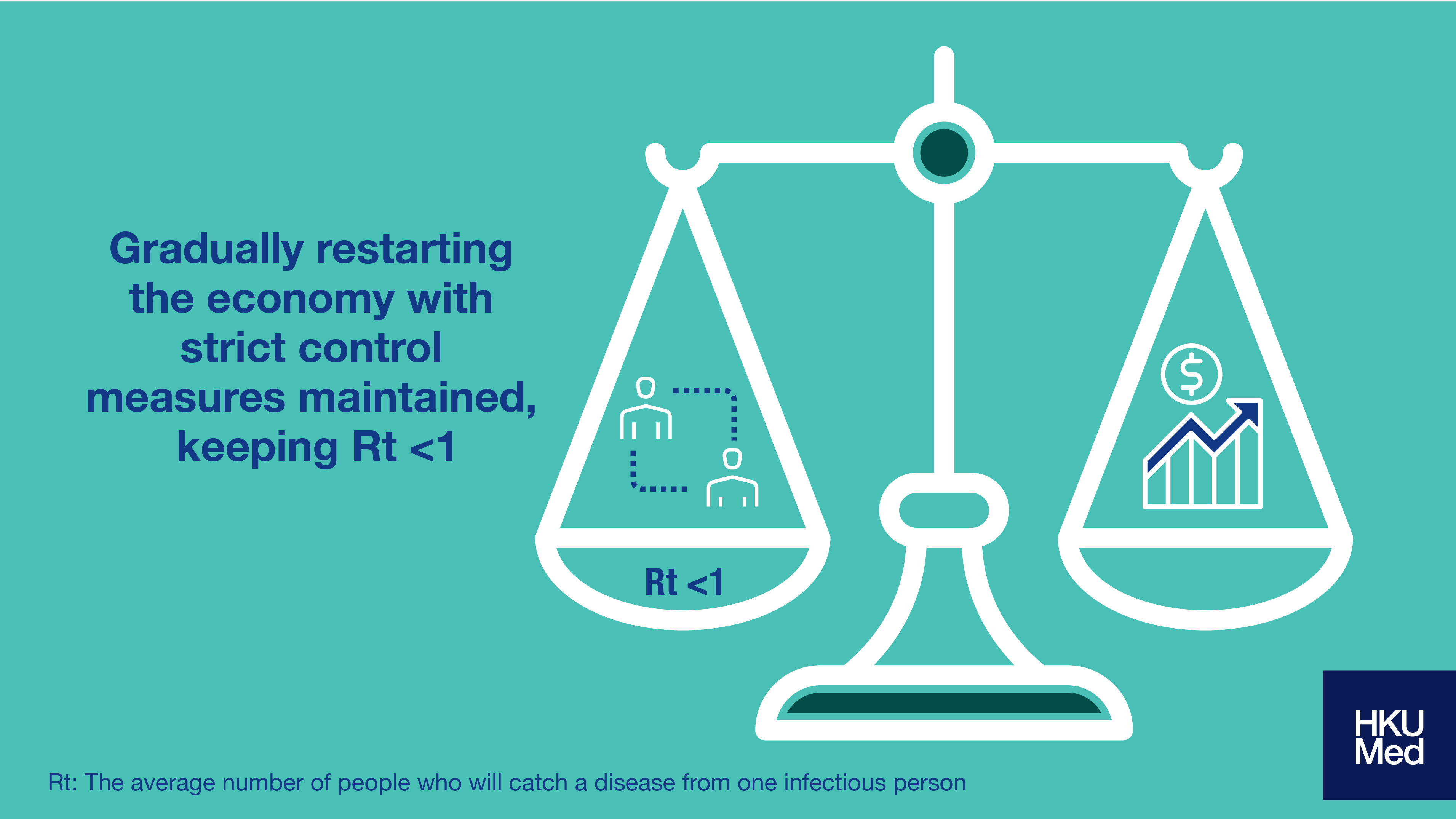With strict control measures implemented in China, the daily reported cases have fallen to nearly zero in most areas outside Hubei province. Most cities across China have begun to resume business even as COVID-19 continues to spread globally. A team of experts from HKUMed studied the spread of the SARS-CoV-2 virus outside Hubei province while strict control measures were in place to inform the steps needed to prevent a second wave of infection.
The study results published in a leading medical journal, The Lancet, explained how a rapid outbreak would re-emerge in China with relaxed control measures. Key takeaway messages were:
- If each infected person spread the disease (Rt) to more than 1 person, on average, the reintroduction of strict control measures would not slow the spread of disease to the levels achieved in the first wave.
- The study predicted that stricter control measures would be needed to control the infection.
- Restarting the economy and relaxing control measures too soon would cause more loss to health and the economy.
- The best solution was to balance kick-starting the economy with keeping the Rt below 1 until an effective vaccine becomes available.
- This must be done with control measures such as social distancing, behavioural changes and public awareness being maintained for some time.
The study called for a better understanding of how people travel and interact, and then adjust when to restart the economy accordingly. Keeping a close watch on how the virus spreads will ensure that the rate of infections is kept within the limits that healthcare systems can cope with.
To read the original article published in The Lancet, click here.
